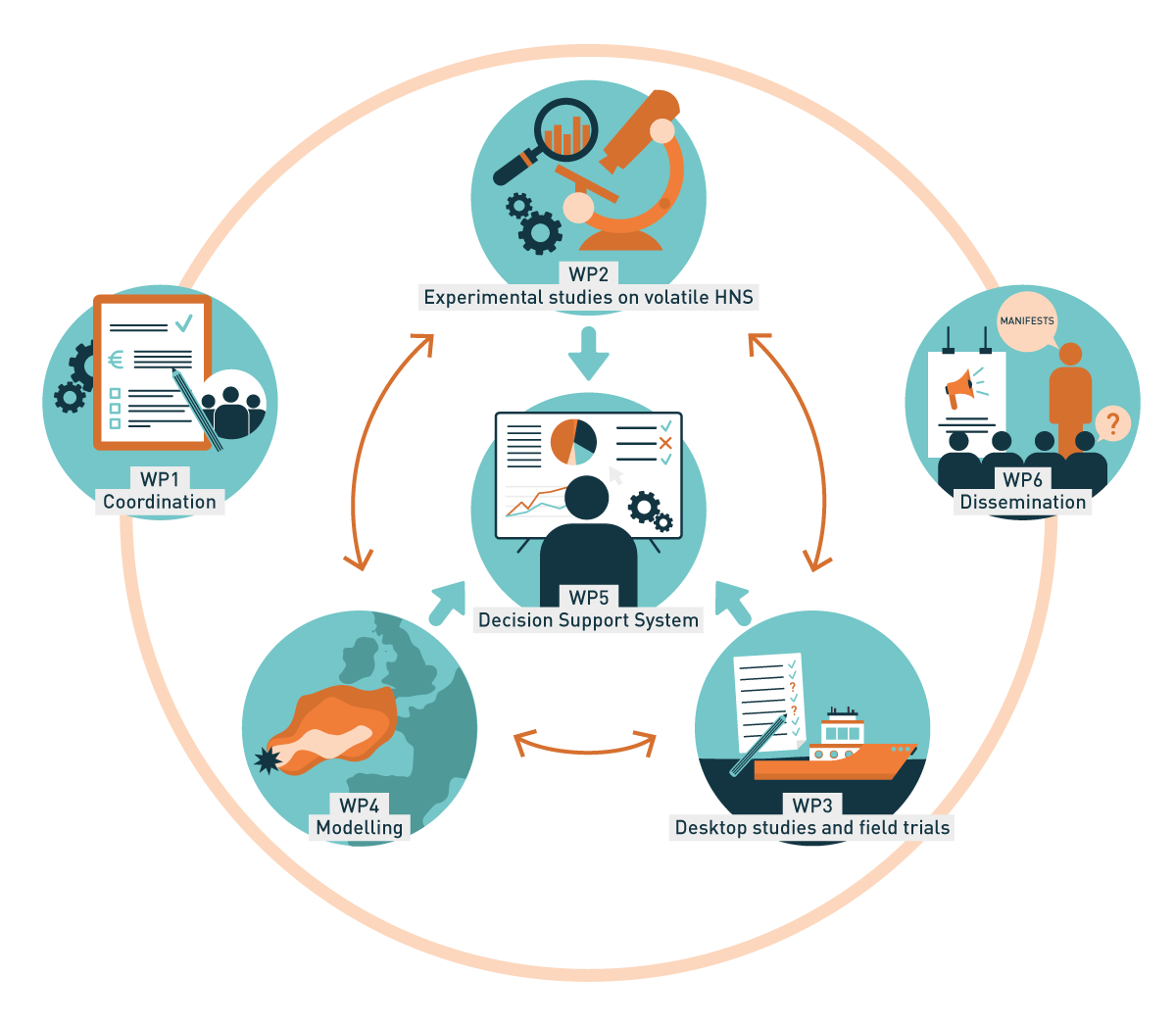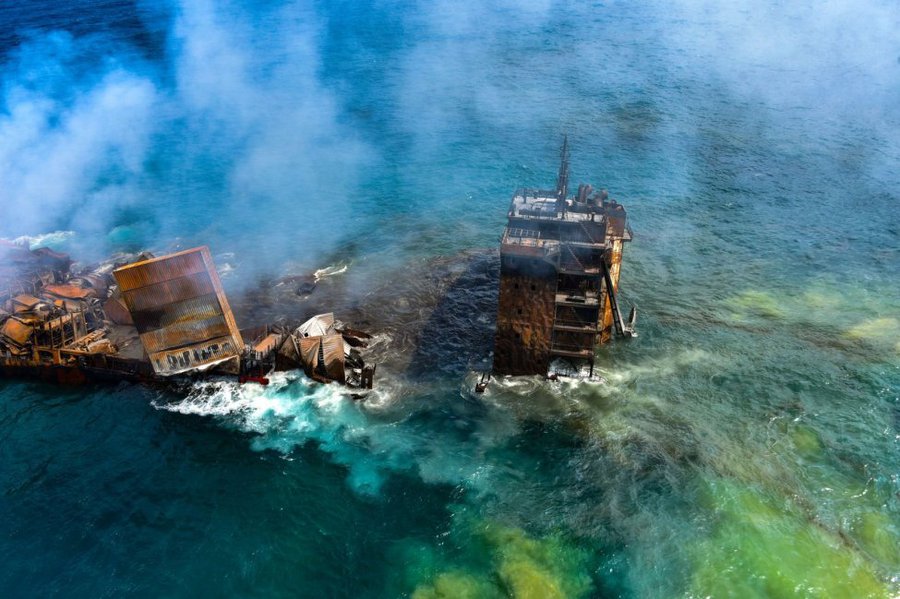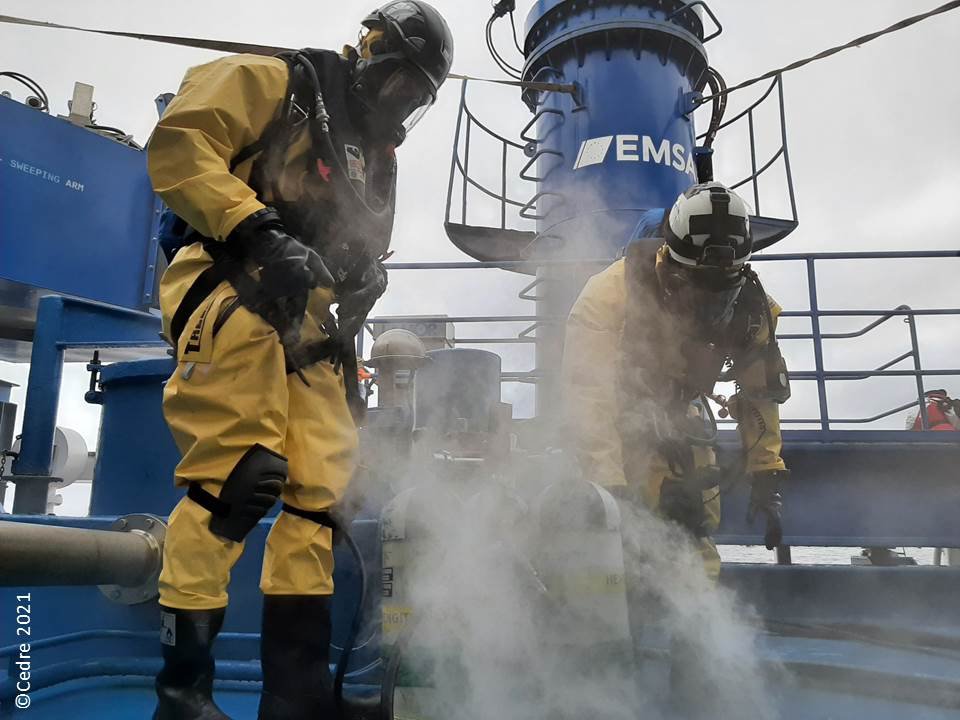Accidental release of volatile Hazard Noxious Substances (HNS) at sea can lead to the formation of toxic, flammable or even explosive gas clouds potentially hazardous for nearby population and the environment. The objective of MANIFESTS is to address the lack in response guidance on dealing with such airborne releases and with decisions over sheltering or evacuation of the crew, responders and the coastal population. The project seeks to improve response capacities of marine pollution responders through the development of innovative decision support tools and operational guidelines and by facilitating access to relevant knowledge and databases, particularly on volatile HNS spills.


Responding to maritime accidents can be extremely challenging when involving HNS that behave as evaporators. Due to their potential to form toxic or combustible clouds, evidence-based decisions are needed to protect the crew, responders, the coastal population and the environment. However, when an emergency is declared, key information is not always available for all the needs of responders. A case in point is the lack of knowledge and data to assess the risks that responders or rescue teams could take when intervening, or those that could impact coastal communities when allowing a shipping casualty to dock at a place of refuge.
The ultimate objective of MANIFESTS is to address these uncertainties and improve response and training capacities through the development of an operational decision-support system (DSS) for volatile HNS spills.
Other expected outcomes include:

The MANIFESTS project receives a co-funding from the European Union Civil Protection Mechanism of DG-ECHO as 85% of the eligible costs (call UCPM-2020-PP-AG – Prevention and preparedness for marine pollution at sea and on shore).
Budget
€ 1,028,456
Time span
01/2021 to 12/2022
Countries
FR, BE, ES, NO, PT, UK
The project is divided in 6 Work Packages (WP) with one responsible partner for each one.
WP1 is dedicated to the coordination and management of the project. This includes the implementation of mechanisms to ensure that MANIFESTS meets its objectives and delivers its results and outputs on time, keeping an efficient communication flow between the beneficiaries and ensuring that robust financial management systems are put in place by all the beneficiaries. With the support of the Steering Committee, the Partner in charge has to report to the European Commission following the requirements stated in the Grant Agreement.
Responsible Partner: Cedre
In the case of maritime accidents, knowledge about any chemicals released is essential to predict the potential consequences of the spill on the surrounding environment. Accurate information will help to define strategies covering the different aspects of response to HNS and to reduce the potential effects such as fire and/or explosion, toxicity on human and environmental receptors. The objectives of WP2 are to characterise and assess the behaviour and impacts of HNS when released at sea, with particular emphasis on a release of volatile substances which will induce a potential toxic, flammable and/or explosive gas cloud. This WP will comprise theoretical and experimental studies in order to inform understanding of the fate of the gas cloud and to produce the necessary data for the explosive and fire risk module to be developed in WP4.
The WP2 will improve understanding of several aspects linked to the hazard of such gas clouds, notably:
Responsible Partner: ARMINES
The objective of WP3 is to enhance capabilities to respond to maritime incidents involving gases or volatile HNS, by reinforcing and improving the capabilities of detection of HNS pollution, the land-sea coordination, the development of response protocols and risk assessment for the population, as well as strengthening training and exercises capacities. To achieve this, four main activities will be carried out:
1) Development of guidance on risk assessment for maritime events involving releases to the atmosphere to support decision making in terms of protecting human health;
2) Evaluation of different monitoring technologies (sensors) and testing of their performance in open sea;
3) Testing response capacities complemented with the tools developed in MANIFESTS via shoreline (desktop) and port (field) exercises;
4) In parallel and making use of the outcomes of these tasks, key resources and methodologies will be produced and integrated into an exercise package to facilitate training and exercise for different scenarios, tools and actors. This will pave the way for transferring guidance and training capabilities to end users beyond the project partners.
Responsible Partner: CETMAR
Four different models are used by the MANIFESTS partners to simulate drift, fate and behaviour of chemical pollution events at sea. These models are OSERIT/ChemDrift developed and operated by RBINS; MOHID developed and/or operated by IST and INTECMAR; openDrift developed and operated by MET Norway and ChemMap, a commercial solution developed by RPS and operated by Cedre.
WP4 first objective is to improve the capacity of the 3 in-house models to simulate the behaviour of the volatile HNS. According to the models, improvements may relate to evaporation processes, or to advection-diffusion processes in the atmosphere. To complete the processes simulated by these models, new stand-alone models will also be developed to assess the risk for the counter-pollution response teams in case of explosion or fire of the released gas cloud.
WP4 second main objective is to prepare some documentation material that shall clearly explain to the responders what are the strengths, weaknesses and limitations of the models and give important key to correctly interpret the different model results. To this purpose, we will conduct an in-depth model intercomparison exercise as well as a model validation exercise against data collected in the Lab (WP2) or on the field (WP3).
Responsible Partner: RBINS
Taking advantages of the experience gained in previous projects (HNS-MS, ARCOPOL, MARPOCS, MARINER, HAZRUNOFF), WP5 focuses on the development of three decision support tools:
To enhance the replicability of the tools in any regional seas, development will be based on open-source code released on a github like repository, on OGC standards, on responsive web sites. The development will also be independent from e.g. any specific models, meaning that some code adjustment must be foreseen for local applications.
Responsible Partners: RBINS & INTECMAR
WP6 gathers all work performed to ensure an efficient dissemination of the project outputs towards authorities and stakeholders working on maritime pollution and/or civil protection, whether at local, regional, national or international levels. To do so, the tasks included in this WP focus on drawing up the communication, capitalisation strategy and implementing adequate tools including training material for the successful sharing of the MANIFESTS results. Among the key training material will be a serious game for the training of Emergency responders and planners using an immersive scenario and an upgraded HNS Knowledge Tool.
Responsible Partner: Cedre